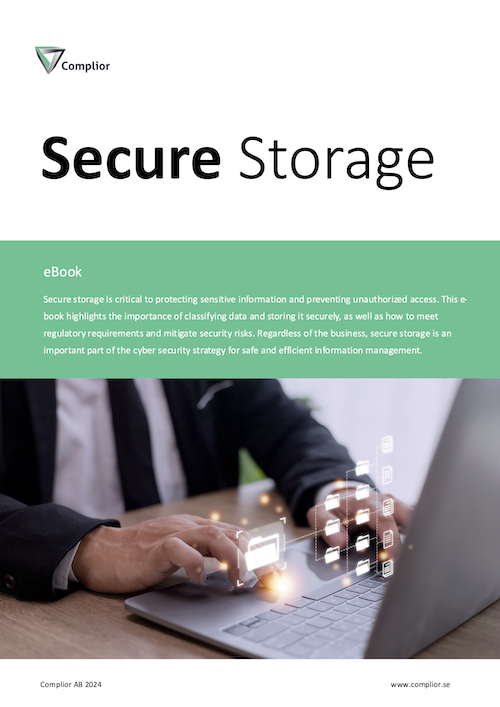In this series:
Secure information sharing and collaboration
Being able to share information securely is a critical function for many organizations, especially those working on projects with external partners, suppliers or consultants. Ensuring that sensitive information does not fall into the wrong hands requires robust tools and methods that allow files and documents to be shared securely, while access is closely controlled.
Encrypted information sharing
Encrypted communication channels are used to protect data during transmission and storage. By using tools that enable encrypted sharing of files and documents, organizations can ensure that only authorized recipients have access to the information. Encryption makes it impossible for unauthorized persons to read the content, even if it were intercepted or stolen in transit.
Granular access when sharing information
It is important to be able to share information with the right people and with the right permissions. An effective information sharing tool makes it possible to:
Secure reader for read-only access
A common solution to prevent unauthorized dissemination or misuse of shared information is to use a secure reader. This means that the recipient can only read the information via a secure viewing application that prevents:
This method ensures that the information can be shared in a controlled manner and minimizes the risk of sensitive data being disseminated, even if the document has been shared with external parties.
Usage policies based on recipients
Another important aspect of secure information sharing is applying individual policies depending on the recipient and their role in the organization or project. For example:
Having granular usage policies based on the recipient's relationship to the organization ensures that each individual gets exactly the level of access required for their data, and nothing more.
Customized security levels depending on the type of document
Different types of information, such as blueprints, financial reports or project documents, require different levels of security depending on their sensitivity and who they are shared with. Organizations should be able to set specific security policies for different types of information
Prevention of proliferation and abuse
One of the biggest challenges with information sharing is preventing shared information from spreading further without control. There are several techniques and tools that can be used to minimize these risks:
Watermarking for increased security
Using watermarking is an effective way to further protect shared information. By applying automatic watermarks to documents, indicating that the material is confidential or belongs to a specific department, organizations can clearly demonstrate that the information is protected. Watermarks can also include the recipient's name or email address, which creates a deterrent effect and makes it possible to trace any leaks.
Strong security measures to protect information:
To protect information from being stolen or disseminated, knowingly or unknowingly, it is crucial to implement strong security measures. These security measures help organizations deal with both internal and external threats and ensure that sensitive information remains protected.
Here are some of the key actions:
Data encryption both at rest (stored) and in transit:
Data Loss Prevention (DLP):
Automatic discovery of sensitive data:
Automatic labeling of sensitive data:
User training:
Continue reading:
Traceability and logging & Encryption
